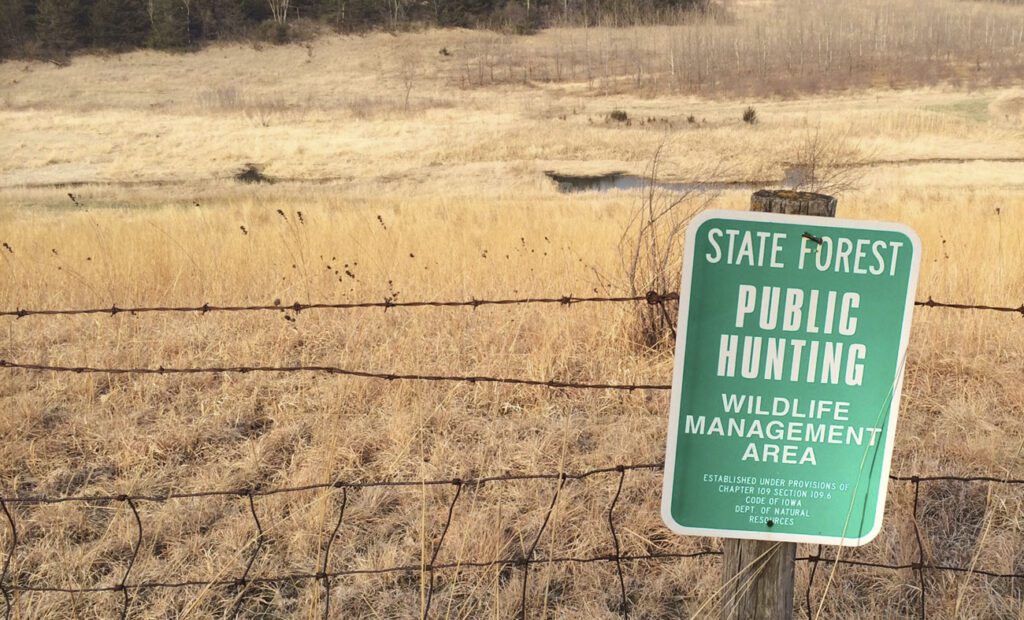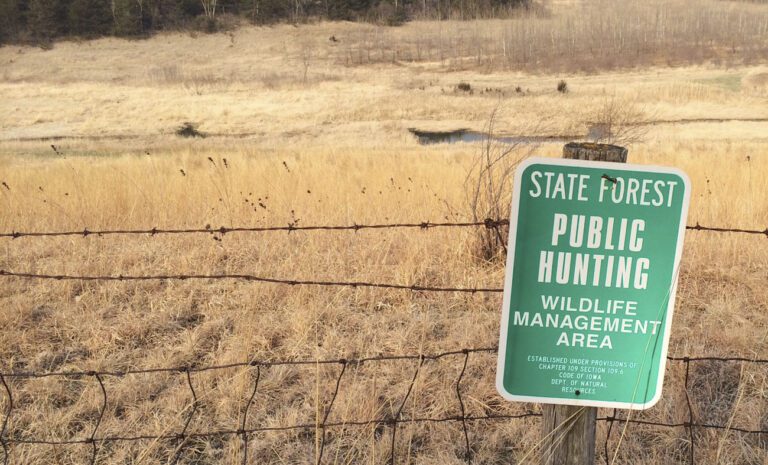1. Always check the laws.
Before you venture out for your first hunting trip on public land, it’s important to know the laws and regulations. Most of these will differ based on the area where you’re hunting, from state to state and even from county to county. This makes it essential to always double-check your local laws before planning a hunt.
One of the main requirements is that hunters must obtain a permit before embarking on their hunt. The type of permit needed differs depending on the animal being hunted, so be sure you know what game you plan to go after (deer or elk, for example), as well as if you need any special permits or tags specific to that type of animal. Other things to keep in mind include:
- The time period in which hunting is allowed in your area (known as season dates)
- Size restrictions (how big an animal must be)
- Bag limits (the number of animals you can kill per day)
2. Get to know your public land options.
Hunters interested in hunting on public land should first familiarize themselves with their options. Generally, public land is administered and managed by either the federal government—for example, Bureau of Land Management (BLM) lands or national forests—or state governments. The federal government has three basic types of public lands: wilderness areas, national parks, and national forests. Wilderness areas are generally inaccessible to hunters because they prohibit motorized travel; however, this can vary based on the specific area you’re visiting. National parks are more accessible to hunters than wilderness areas but still have some restrictions, so it’s important that you call ahead and make sure you know what’s allowed before you go. National forests are perhaps the most common type of public land for hunters because they allow hunting as well as motorized travel. Hunters looking for an all-around great experience should start with a national forest if there is one available near them!
Every U.S. state has its own rules about hunting public land within its borders; these rules can include things like where you’re allowed to hunt and whether permits or licenses are required to do so on a given piece of public property. Anyone who wants to hunt on state-administered lands should contact their local Department of Fish and Game to find out what’s required for that specific property and whether or not it’s allowed at all in a particular area due to factors like historical use or population density around the proposed site.
Additionally, hunters who want to find out more information about a specific piece of BLM land could head over to OnX Hunt (the app) where they can navigate through maps using GPS technology developed specifically for outdoor activities such as hunting, fishing and hiking!
3. Know where to hunt.
The best way to ensure a successful hunt is to know where you’re hunting. This is one of the most fundamental lessons of hunting on public land, but it’s important enough that it deserves repeating. Hunting without knowing where you are is not only dangerous, but it also significantly reduces your chances of getting a shot at game (and increases the risk that someone else will get hurt).
Generally, there are three things you need to know about any area before setting foot in it: what laws apply there (both state and federal), what kind of habitat exists there, and what kind of animals live there.
4. Scout ahead of time.
Before hunting season opens, it’s a good idea to scout the area. Although many hunters consider deer drives and other quick-impact methods to be the most efficient way of bagging a trophy buck, careful scouting can pay off with a methodical approach. Search for food sources and water sources, travel corridors, pinch points, or bedding areas that you might want to hunt over.
Scouting ahead of time is also helpful for determining where it’s safe for you to hunt. Even if you’re comfortable with your own safety on public land, the safety of others may still be an issue: look for signs that there are other hunters in the vicinity and make sure you know where they are at all times.
5. Be respectful to other hunters and landowners.
When hunting on public land, you’re not alone. Many other hunters will be sharing the same space as you. Keep a low profile by wearing camo and avoiding bright-colored clothing and vehicles. It’s also important to stay clear of private landowners as they may be hostile towards hunters trespassing. Be respectful of other hunters, too: use only your fair share of the space, and be careful not to interrupt another hunter’s hunt. Make sure you know all the rules and regulations for your area so that you don’t break any laws or accidentally trespass onto private property. Keep in mind that there are requirements for tagging carcasses (this differs from region to region), so be sure to understand those before going out hunting—and follow them! Finally, drive slowly on dirt roads, don’t litter (obviously), and show respect for the land by properly disposing of waste like biodegradable food packaging or toilet paper (if you’re using it).
Public land hunting can be a rich experience.
Public land hunting can be a rich experience. Enjoy the great outdoors and all it has to offer and you are bound to find success. Always be safe, remember to share your experiences with others, and get out there!

